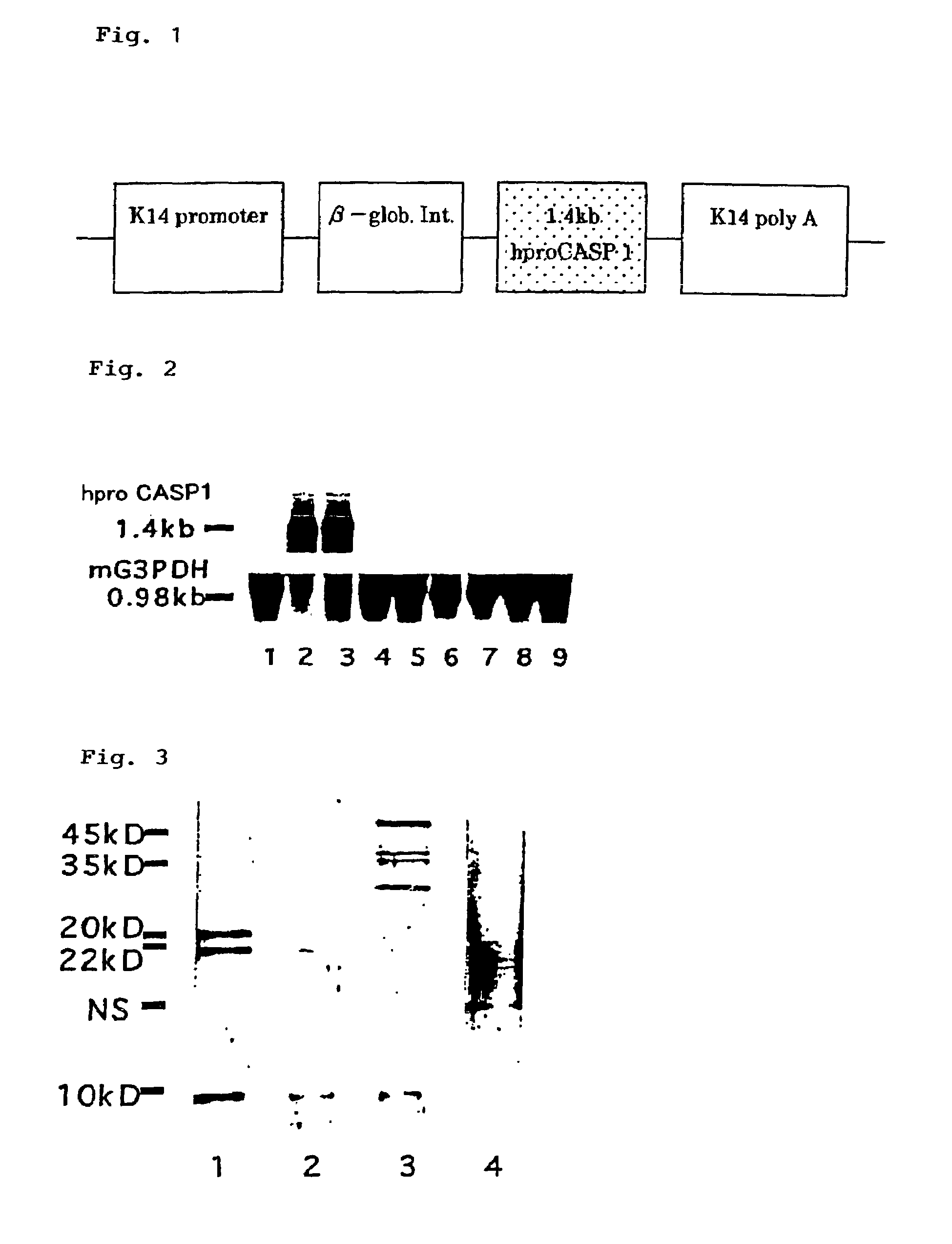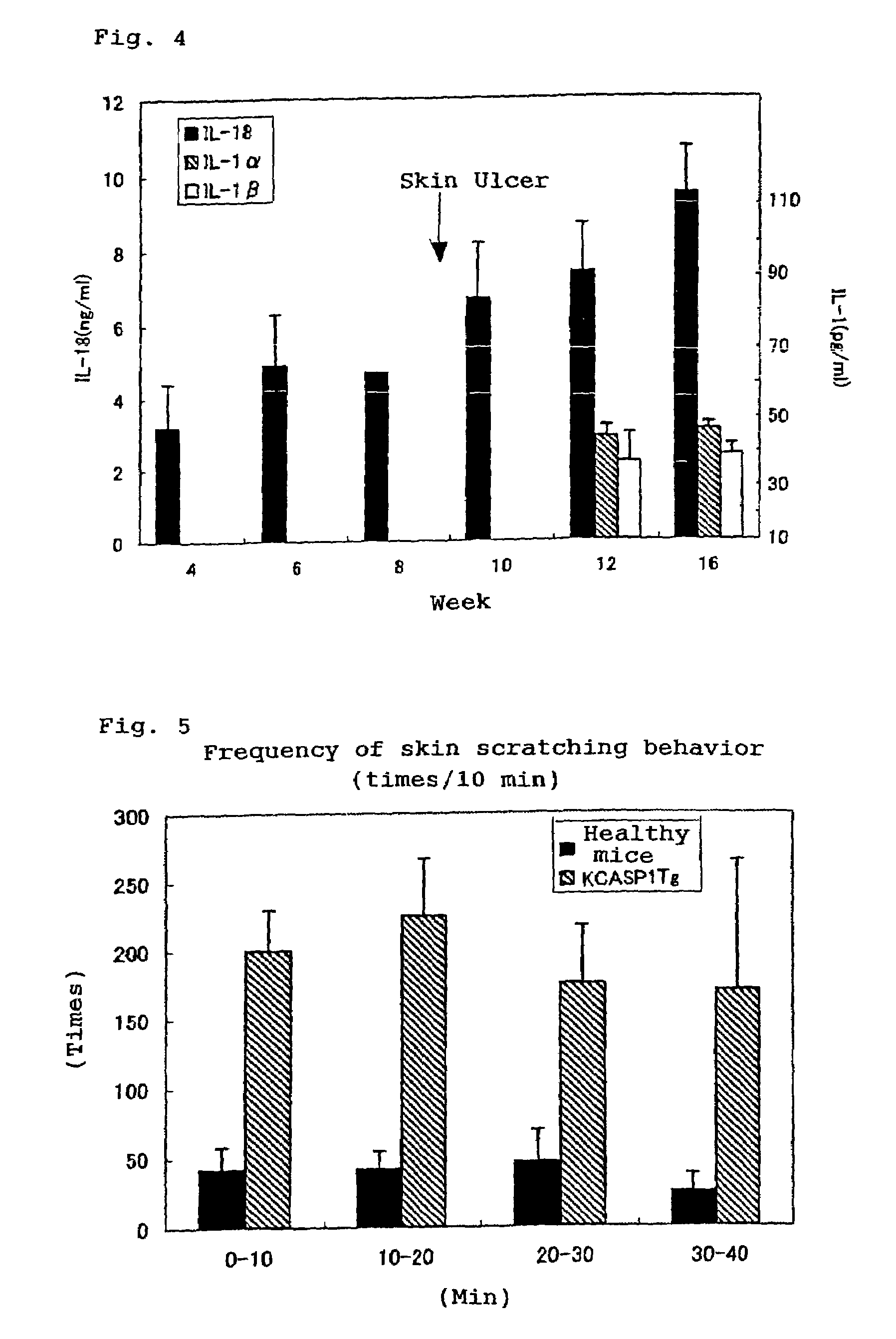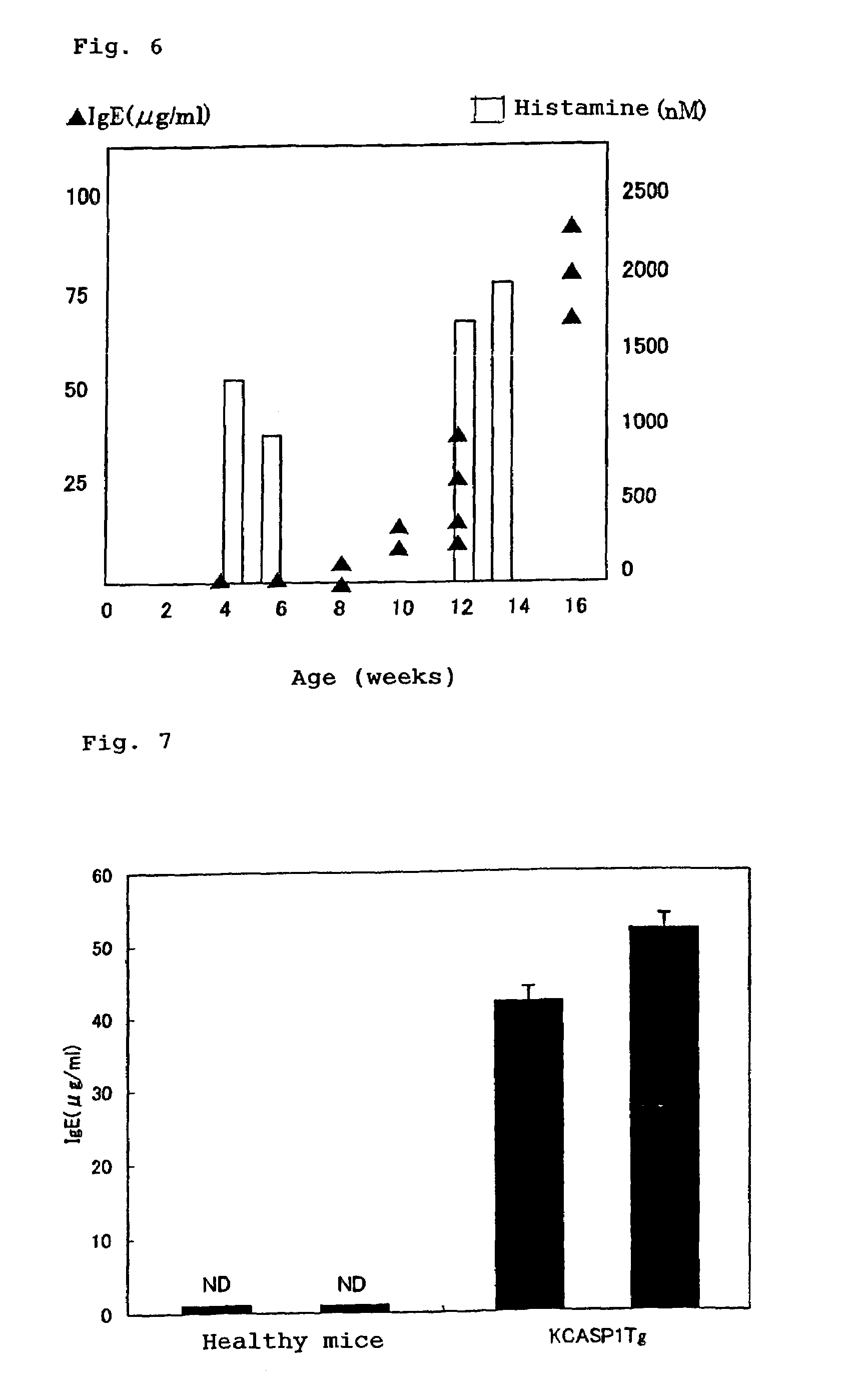Caspase 1 gene transfer animal
a technology of caspase 1 and gene transfer, which is applied in the field of transgenic animals, can solve the problems that the simple transfer of caspase 1 gene for expression in a living body is lethal to the host, and achieve the effect of meliorating the effect of atopic dermatitis
- Summary
- Abstract
- Description
- Claims
- Application Information
AI Technical Summary
Benefits of technology
Problems solved by technology
Method used
Image
Examples
example 1
(1) DNA Construct and Creation of a Transgenic Mice
[0037]1.4 kb cDNA encoding the entire coding region of hproCASP1 was ligated into human keratin 14 promoter (kindly offered by Dr. E. Fuchs, Chicago University; Nature, 374, 159–162 (1995)) and rabbit β-globin intron (kindly offered by Dr. Tanaka, Kyoto University; Nature, 374, 159–162 (1995)) by blunt-end ligation (in FIG. 1, “K14 promoter,”“β-glob. Int.,”“1.4 kb hproCASP1,” and “K14 polyA” refer to human keratin 14 promoter, rabbit β-globin intron, 1.4 kb of human procaspase 1 cDNA, and human keratin 14 polyA, respectively). The thus-obtained DNA fragment was injected into fertilized eggs of C57BL / L6 mice (Charles River Japan, Inc.) through microinjection in accordance with the method described in Dev. Growth Differ., 39: 257 (1997).
(2) Verification of Over-Expression of hCASP1 in the Skin of Transgenic Mice
[0038]The offspring mice was screened for incorporation of the transgene by PCR and Southern blotting using DNA from the tail...
PUM
 Login to view more
Login to view more Abstract
Description
Claims
Application Information
 Login to view more
Login to view more - R&D Engineer
- R&D Manager
- IP Professional
- Industry Leading Data Capabilities
- Powerful AI technology
- Patent DNA Extraction
Browse by: Latest US Patents, China's latest patents, Technical Efficacy Thesaurus, Application Domain, Technology Topic.
© 2024 PatSnap. All rights reserved.Legal|Privacy policy|Modern Slavery Act Transparency Statement|Sitemap



